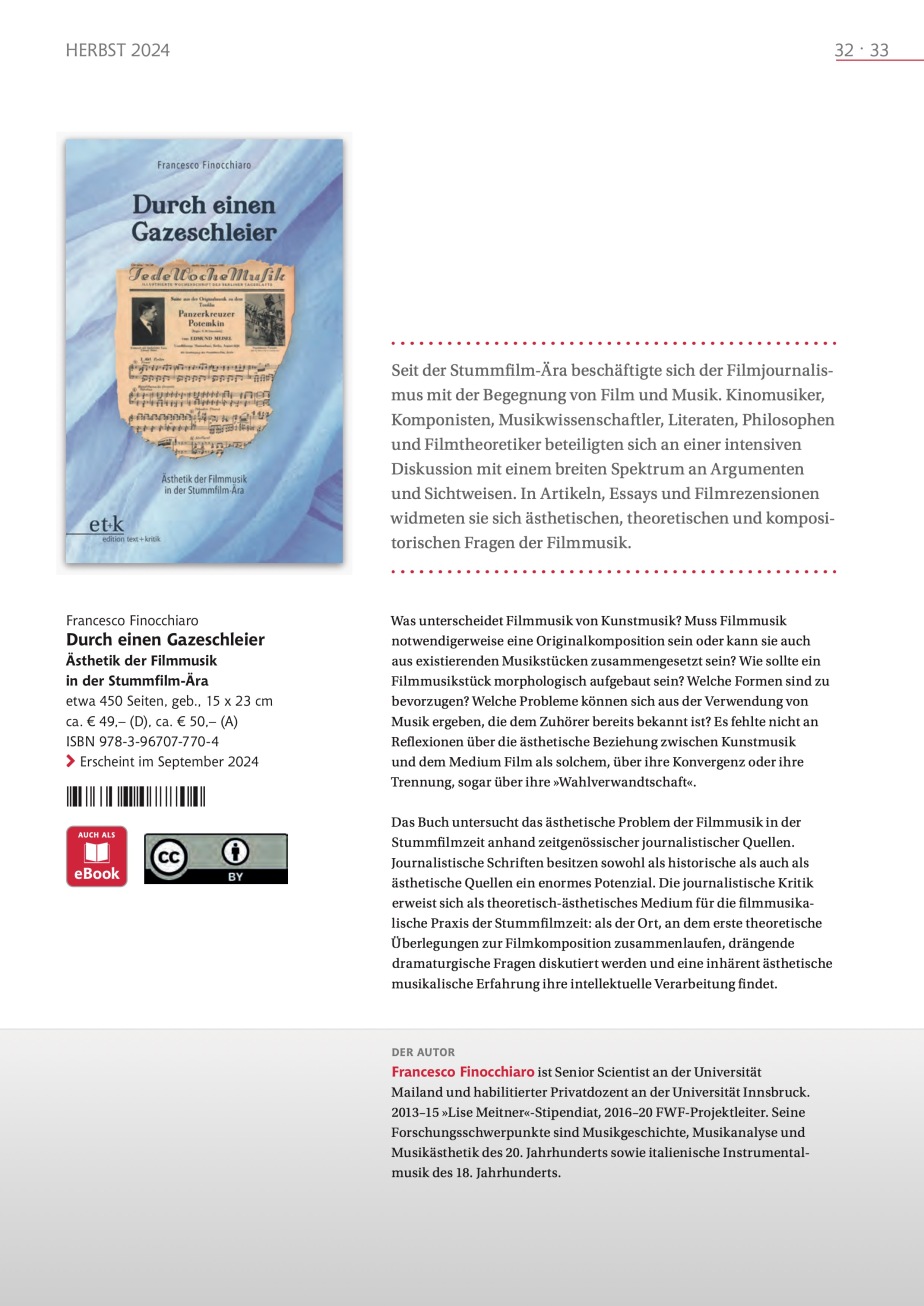
Venia legendi
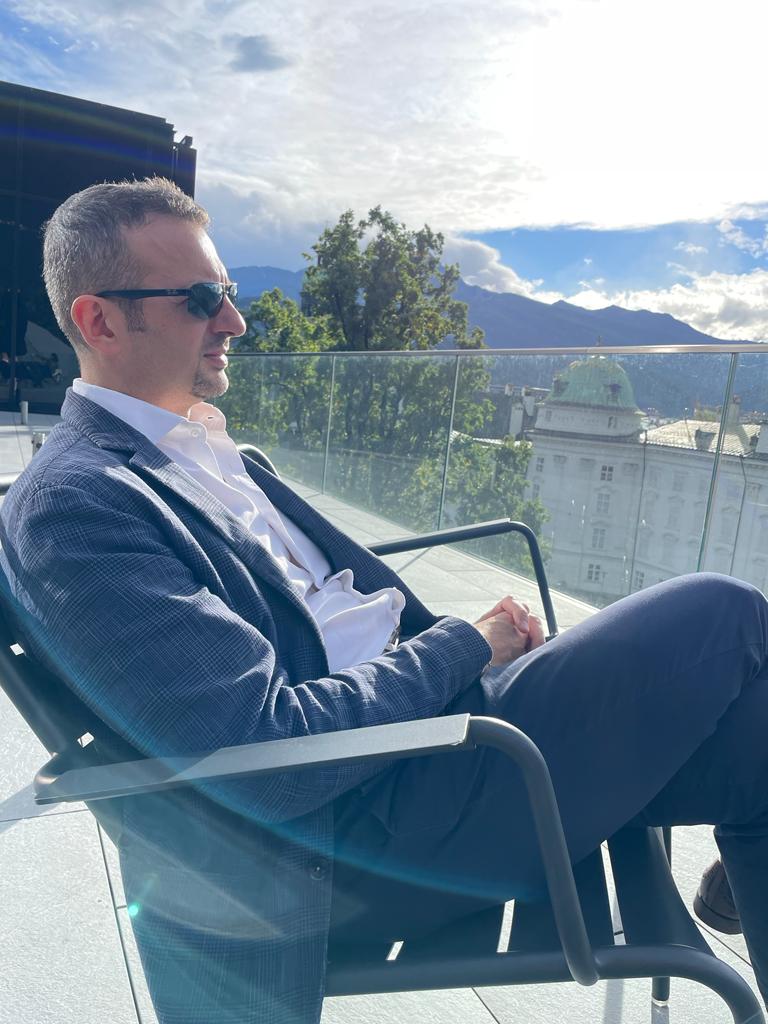
Das Habilitationsverfahren wurde an der Leopold-Franzens-Universität Innsbruck ordnungsgemäß durchgeführt. Ihre hervorragende wissenschaftliche Qualifikation ist auf Grund der Gutachten und Stellungnahmen nachgewiesen, Ihre didaktischen Fähigkeiten sind durch die mehrmalige Lerhtätigkeit an anerkannten postsekundären Bidlungseinrichtungen belegt. Die Voraussetzungen für die Erteilung der Lehrbefugnis sind somit erfüllt.
Innsbruck, am 4. Dezember 2023
Last 24 October 2023 marked the culmination of a journey of professional growth that began more than 10 years ago and was vigorously pursued despite the efforts of those who, between 2018 and 2020, did everything in their power to end my career.
After the evaluation of the Habilitationsschrift entitled Durch einen Gazeschleier. Ästhetik der Filmmusik in der Stummfilm-Ära, the Department of Musicology at the University of Innsbruck awarded me the Habilitation und venia legendi in Historische Musikwissenschaft.
The final event of the habilitation process was the lecture Paradigmen der Gegensätze. Als Musiker und Maler ins Kino gingen.
The newly designeted PD Dr. phil. Francesco Finocchiaro thanks the Evaluation Committee for their valuable suggestions and the Chairman of the Habilitation Committee, Univ.-Prof. Federico Celestini, for his rare professional and human care.
Changing narratives
New doors will open and new experiences will begin. A new start in beautiful surroundings, with all comforts and facilities.
But all of this blessed beauty would be of no use without a sane relationship and an ethically based human environment.
Around Kurt Weill
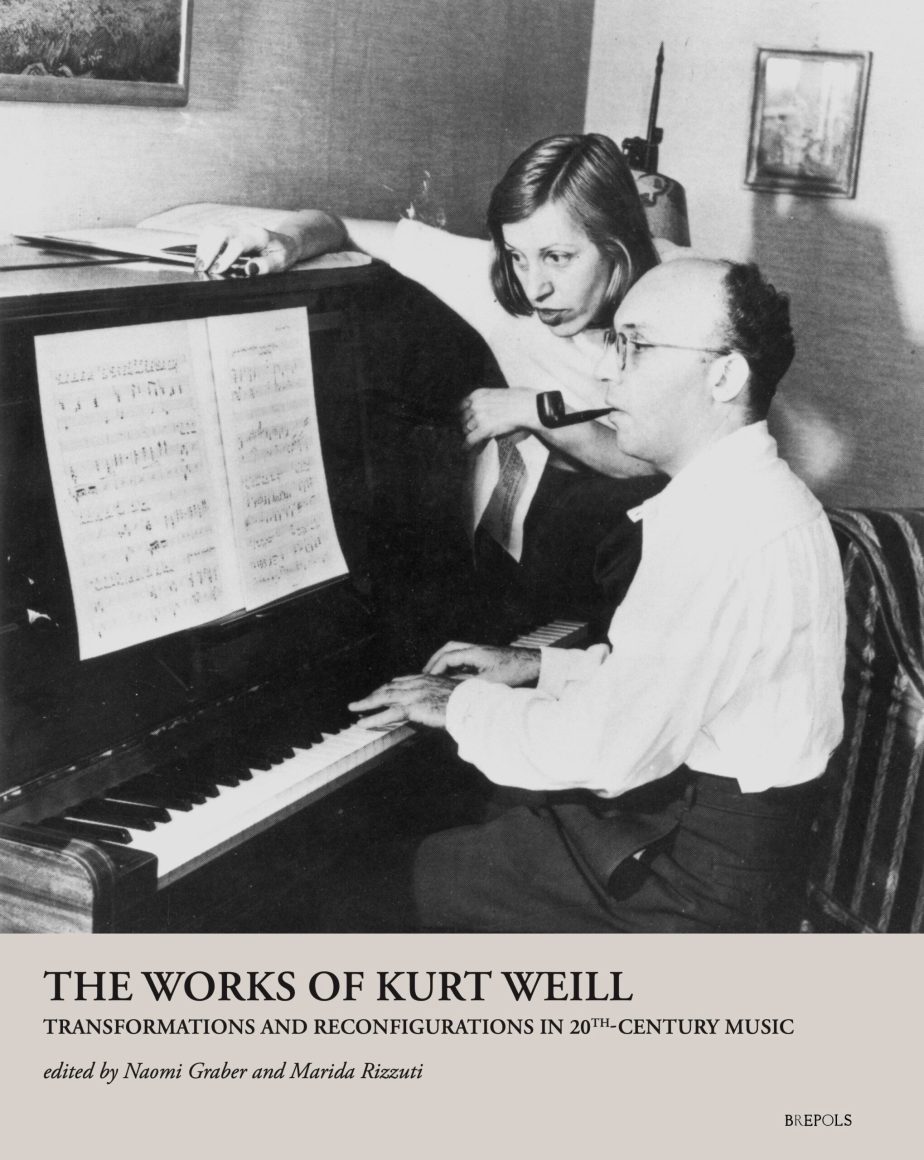
In a well-known interview with Lotte Eisner titled Musikalische Illustration oder Filmmusik?, Kurt Weill declared his personal program of emancipation of film music from the age-old principle of ‘illustration’, that is, the subordinate role of the musical component to dramatic action. The accompanying music – he claimed – should not simply illustrate the events that take place onstage, but should have a “purely musical shaping”, a formal and structural integrity of its own.
After this reflection, he strongly criticized Edmund Meisel’s principle of Lautbarmachung: this idea of ‘acoustic manifestation of reality’, which had informed Meisel’s score for Potemkin (1926), would have never been able to provide “a solution to the problem of film music”. On the contrary, according to Weill this long-awaited solution was to be achieved through an “objective, almost concertante film music”. In film, just like in drama, music should be an independent component that stands in a dialectical relationship with the staged events, instead of sedulously illustrating them. Through this ‘concertante’ quality, music can become an essential part of the ‘epic attitude’ of the artwork. Through the tension that it establishes with the action or the visual sphere—for instance by providing an antiphrastic counterpoint to it, or by interrupting its flow—music unmasks the illusion of realism of the narrative fiction. ‘Concertante music’ prevents spectators from passively identifying with fiction, instead pushing them to actively search for nuances of meaning that hide behind outer behaviors.
The principle of ‘concertante music’ was widely applied not only in Weill’s musical theater, from the music for Dreigroschenoper to the opera buffa Aufstieg und Fall der Stadt Mahagonny, but also in many scores for cinema of the early 1930s-Germany by art-music composers and film-music specialists such as Paul Dessau, Hanns Eisler, Walter Gronostay and Weill himself. A thorough analysis of audiovisual montage casts light on a variety of dramaturgic choices, from dramaturgical counterpoint to horizontal collage, all of which share two basic features: the preservation of some degree of formal coherence for the musical component and the tendency to treat music and sound like any other montage material.
Overcoming any slavish illustration of the narrated events in favor of a type of music that is able to establish a dialectical tension with the stage events, and constitutes an autonomous text with its own formal coherence and semantic density, is the most important legacy cinema received from Weill’s principle of ‘concertante music’.
Francesco Finocchiaro, Kurt Weill and the Principle of ‘Concertante Music’, in The Works of Kurt Weill: Transformations and Reconfigurations in 20th-Century Music, edited by Naomi Graber and Marida Rizzuti, Turnhout, Brepols, 2023, pp. 21–36.
Ontological problems in silent film music
The notion of ‘musical source’ gives rise to considerable problems in the study of silent film music. On a purely historical level, it should be remembered that most of the music for silent films no longer exists. On the other hand, a vast repertoire of mood music from the silent era has come down to us as an example of specialised publishing in the field of film music. Collections such as Kinothek, Motion Picture Moods, Filmharmonie and many others consisted of original pieces that were not associated with a specific film, but were designed to fit into standard narrative situations or to provide a common emotional aura.
The practice of reusing and re-functionalising these pieces of music, constantly oscillating between composition and compilation, raises ontological problems concerning the multiple definition of the musical work, its author and its performance. The score of a piece of mood music is not, in fact, the source of an opus in the strict sense of the term. It is not an aesthetically grounded entity, but rather an operational instruction at the service of a subsequent creative act: the one that will shape the musical accompaniment of a particular film screening in the cinema.
The ubiquity of mood music is not the exception, but the rule. Identifying and cataloguing a piece of mood music is therefore not in itself a useful scholarly knowledge unless it is complemented by knowledge of its adaptive uses. These, however, are not to be found in the primary source, but must be reconstructed by consulting secondary sources of various kinds, from film scenarios to journalistic reviews, which only in their constellation give an account of the cinematic show as a whole.
Francesco Finocchiaro, Ontological Problems of Silent Film Music between Compilation and Composition, IAML Annual Meeting, University of Cambridge, 31 July – 4 August 2023.
Lago Film Fest
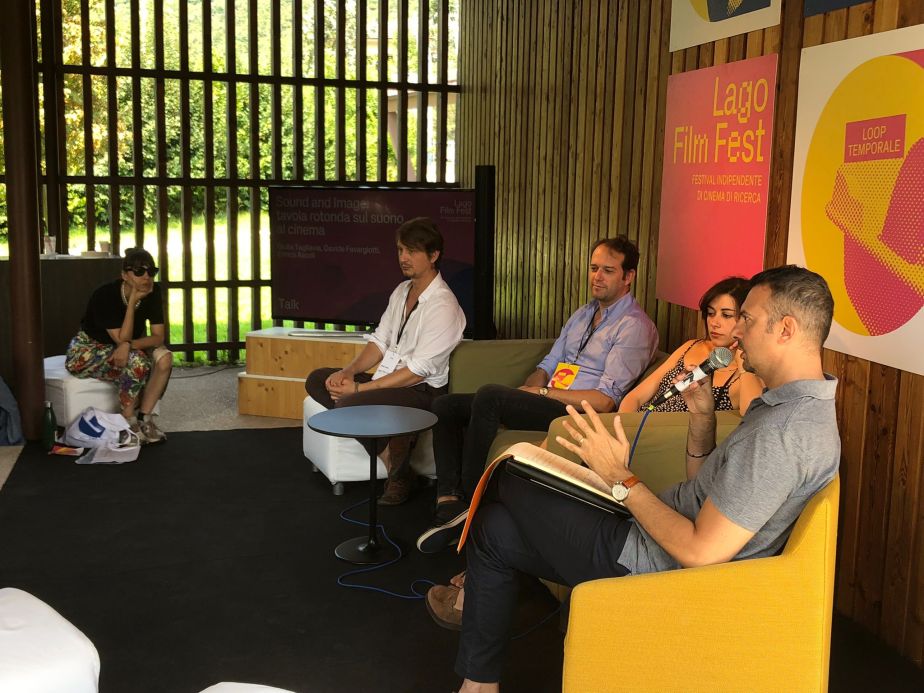
A lecture on the pioneer of silent film music, Giuseppe Becce, and a round table on the current outlook for soundtracks marked the beginning of the professional collaboration with Lago Film Fest: a stimulating and joyful environment, immersed in a beautiful naturalistic setting, dedicated to promoting independent cinema and its professionals.
Lago Film Fest, Revine Lago (TV), July 21-29, 2023.
The Luce-Ufa Cinematic Axis
At the end of the 1920s, the German film giant Universum Film A.-G. (Ufa) established an industrial alliance with the Italian Istituto Nazionale Luce: signed in 1928, the agreement provided for the exchange of footages for the respective newsreels, within the framework of a consolidation of political-propaganda action in both the countries. The ‘pact of steel’ between Luce and Ufa was reaffirmed in 1933. In that year, Third Reich propaganda minister Joseph Goebbels went to Rome, where he met Luigi Freddi, then responsible for the propaganda of the Fascist regime, and explained to him the functioning of the Reichsfilmkammer. Goebbels’ criteria for the political reorganization of German cinematography were taken as a model by the Fascist intellectuals, so much so to be enthusiastically commented in the regime’s cultural journals.
The first result of the Luce-Ufa collaboration was the documentary Lo stormo atlantico (1931), dedicated to the transoceanic flight by a team of seaplanes headed by Italo Balbo. Shot by camera operator Mario Craveri, the film was sent to Germany to be synchronized with the Tobis-Klangfilm system. The soundtrack, upon which we well dwell for the purpose of this paper, was therefore edited independently in the Ufa studios.
The pact of steel between Fascist and Nazi cinematic industries consolidated at the outbreak of the World War II. There were two main areas of collaboration: (1) the co-production of documentary films on the progress of the war, between 1940 and 1941, and (2) the establishment of a newsreel, La Settimana Europea, the Italian translation of the Deutsche Wochenschau, during the Republic of Salò.
The Other ‘Pact of Steel’: The Luce-Ufa Cinematic Axis
Free paper at the International Conference “Music and Conflict: Politics and Escapism of Wartime Culture”.
Institute of Austrian and German Music Research
University of Surrey, 19-20 May 2023
Book presentation
Dietro un velo di organza
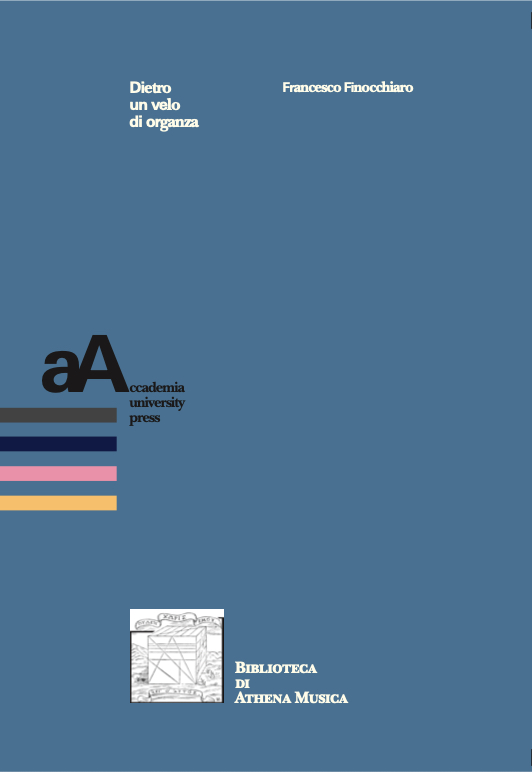
Sin dall’era del muto la critica cinematografica pose a tema il connubio fra musica e cinema. Compositori, musicologi, filosofi, teorici del cinema contribuirono a una vivace discussione intorno alle caratteristiche e alla funzione della componente musicale nelle proiezioni cinematografiche, con un ampio spettro di argomentazioni e punti di vista. In articoli, saggi, recensioni si sollevarono innumerevoli questioni di natura estetica, teoretica e compositiva: che differenza c’è fra musica cinematografica e musica d’arte? Una musica per film deve essere necessariamente una composizione originale o può includere musiche preesistenti a mo’ di compilazione? Come deve essere fatto da un punto di vista morfologico un brano di musica per film? Quali problemi possono derivare dall’uso di musiche che siano già note agli ascoltatori? Non mancarono riflessioni sulle relazioni estetiche fra l’arte musicale e il medium cinematografico in quanto tale, sulla loro convergenza o separazione, e persino sulle loro “affinità elettive”.
Il libro si pone l’obiettivo di indagare il problema estetico della musica per film nell’era del muto sulla scorta delle fonti giornalistiche coeve. Gli scritti giornalistici possiedono un enorme potenziale conoscitivo come fonti estetiche e storiche, a un tempo. Il giornalismo cinematografico si rivela un medium teorico-estetico per la pratica della musica per film nell’era del muto: il luogo in cui convergono le prime riflessioni teoriche sulla composizione cinematografica, si discutono urgenti questioni drammaturgiche e un’esperienza inerentemente estetica della musica riceve una raffinata elaborazione concettuale.
Francesco Finocchiaro, Dietro un velo di organza. Il pensiero sulla musica cinematografica nell’era del muto, Torino, Accademia University Press, 2020 (Biblioteca di Athena Musica, 2)
Aporias of Film Restoration

The notion of “film restoration” raises considerable problems for research into silent film music. Handwritten scores with the orchestration intended by their authors are rare; in cases where piano scores have been preserved, these were often produced in a different context and for a completely different purpose. In contrast, a large repertoire of mood music pieces has come down to us from the silent film era, which according to their nature, however, could either precede a “musical illustration” or descend from it a posteriori.
Musical documents of such varied nature, which could represent completely different moments in the compositional process, raise notable problems of interpretation when they are assumed as the starting point for a “film-music restoration”. In contrast to an alleged authenticity, emphatically proclaimed for mostly commercial reasons, it will be noted that even the most historically accurate procedures of film-music reconstruction often require arbitrary interventions in the musical documents, which imply different assumptions regarding the ontological status of the score and the film, as well as their respective authorships.
It is surprising to find a similar level of arbitrariness even in the most celebrated exemplar of a film-music restoration of the last years: Frank Strobel’s reconstruction of Huppertz’ score for the film Metropolis. Despite all declared claims for philological completeness and historical truthfulness, the reconstruction of this silent film score proves rather to be a process of translation and adaptation. The final result of such a procedure is not only historically new and indirectly derivable from the state of the sources, but also completely rooted in the aesthetic expectations of the present era.
Francesco Finocchiaro, Aporias of Film Restoration: The Musical Documents of the Silent Era between Film Philology and Market Strategies, «Acta Musicologica», XCII/2, 2020, pp. 180-199.
Operatic Works in Silent Cinema
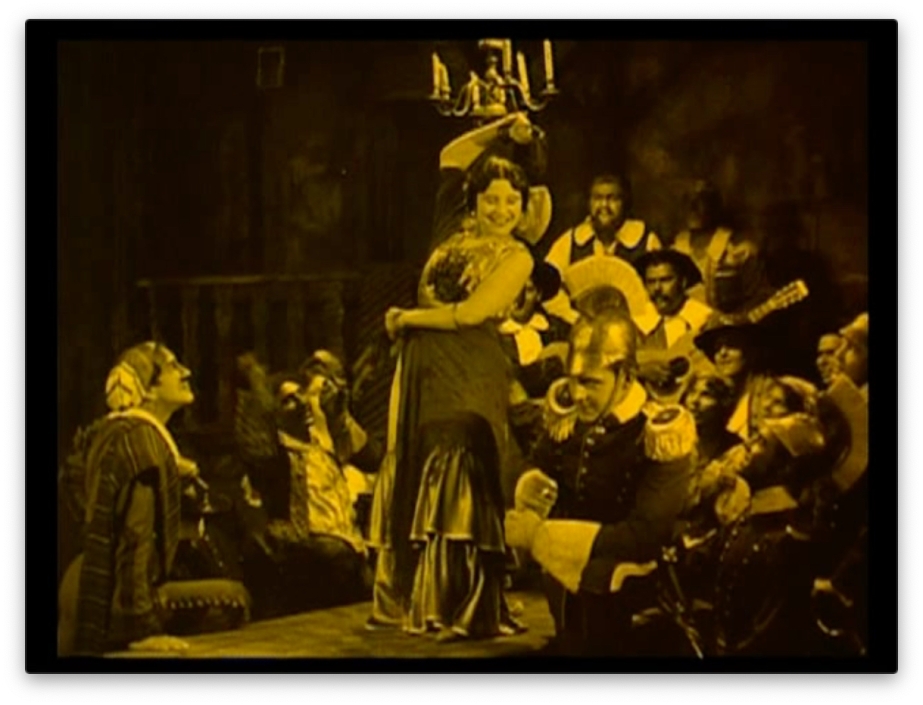
Between the 1910s and 20s, countless film adaptations of operas originated as a consequence of the medial competition between cinema and the bourgeois cultural institution par excellence: opera. Film adaptations aspired to lend artistic and cultural dignity to the new medium of cinema and, at the same time, actualized operatic subjects, adapting them to the cinema’s sense of naturalism and immediacy.
The processes of adaptation carried out by filmmakers could take on a variety of characteristics, as a result not only of the varying practical needs of a particular adaptation, but also of different aesthetic paradigms of cinema, that is, the different ways of conceiving its semiotic modes of discourse and the hierarchical configuration of the artistic languages embedded in it.
This article compares the adaptational strategies in four films––Cecil DeMille’s Carmen (1915), Albert Capellani’s La vie de Bohème (1916), Jacques Feyder’s Carmen (1926), and Richard Strauss & Robert Wiene’s Rosenkavalier (1926)––that represent just as many different modes of engagement with their operatic originals. These instances are interpreted as different solutions to the very same aesthetic problem: i.e., how to translate operatic dramaturgy into a cinematic means of expression.
Francesco Finocchiaro, Operatic Works in Silent Cinema: Toward a Translational Theory of Film Adaptations, «Music and the Moving Image», XIII/3, 2020, pp. 49-71
Montepulciano 2020
At the 45th Cantiere Internazionale d’Arte di Montepulciano, Prof. Francesco Finocchiaro introduced a silent soirée, with live-music accompaniment.
Films by Georges Méliès, Segundo de Chomón, Gaston Velle, and others were accompanied by Rovigo Conservatory’s teachers and students, relying on source materials derived from the FMJ Project.
Le voyage dans la lune
in collaboration with Cineteca di Bologna and Rovigo Conservatory
introduced by Francesco Finocchiaro
Cantiere Internazionale d’Arte di Montepulciano
July 25th, 2020




















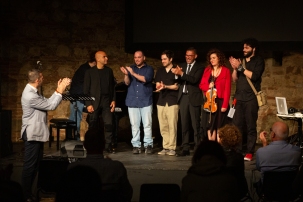






You must be logged in to post a comment.